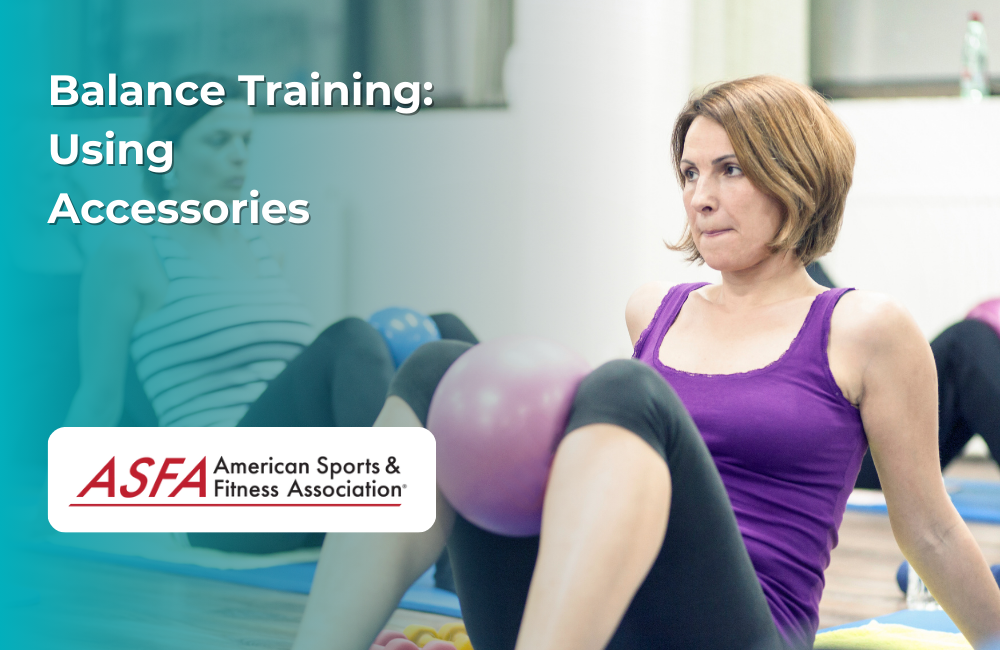Elevate Your Balance Routine with Innovative Tools
Balance training is a fundamental component of fitness that often doesn't get the attention it deserves. It's not just about staying upright; it's about improving coordination, core strength, and preventing falls. To take your balance routine to the next level, consider incorporating accessories that add variety and challenge. In this article, we'll explore the world of balance training using accessories and how they can enhance stability, strength, and overall well-being.
The Essence of Balance Training
Before we dive into the accessories, let's remind ourselves of the importance of balance training:
Balance is the ability to maintain equilibrium, whether stationary or in motion. It involves keeping the body steady and preventing falls or wobbling.
Stability complements balance by emphasizing control and posture during various movements, both static and dynamic.
Why Use Accessories for Balance Training?
Accessories introduce diversity and intensity into your balance routine. Here's why they are worth considering:
- Increased Challenge: Accessories add complexity to balance exercises, making them more challenging and engaging for your muscles.
- Variety: Variety keeps your workouts interesting and prevents plateaus. Accessories offer countless ways to switch up your routine.
- Functional Training: Many accessories mimic real-life situations, improving your ability to handle day-to-day movements with ease.
- Enhanced Core Strength: Balancing with accessories often requires engaging your core muscles, leading to a stronger core.
Popular Accessories for Balance Training
- Balance Boards: These boards have a pivoting base, challenging your balance as you stand or perform exercises on them. They come in various shapes and sizes.
- Bosu Balls: The Bosu ball, short for "both sides up," is a versatile tool that can be used flat or with the dome side up. It's excellent for balance and stability exercises.
- Resistance Bands: Incorporating resistance bands into your balance routine adds an element of tension, engaging more muscle groups.
- Stability Balls: Large inflatable stability balls provide an unstable surface for a wide range of balance and stability exercises.
- Foam Rollers: Foam rollers are excellent for balance training as they provide an uneven surface, forcing your body to adapt and stabilize.
- Balance Discs: These small inflatable discs can be placed under your feet or used as a seat cushion, challenging your balance while sitting or standing.
Sample Exercises with Accessories
Let's explore some balance exercises using these accessories:
1. Bosu Ball Squats
- How: Stand on the flat side of the Bosu ball, feet hip-width apart. Perform squats while maintaining your balance.
- Benefits: Strengthens leg muscles and enhances balance.
2. Resistance Band Balance Rows
- How: Secure one end of a resistance band to a stable object. Hold the other end and balance on one leg. Perform rows.
- Benefits: Works the upper back while challenging balance.
3. Stability Ball Planks
- How: Place your forearms on a stability ball and assume a plank position. Hold for as long as possible.
- Benefits: Engages core muscles, improves stability, and strengthens the shoulders.
4. Foam Roller Leg Raises
- How: Lie on your back with a foam roller under your feet. Lift one leg at a time while keeping the other on the roller.
- Benefits: Enhances core strength and leg stability.
5. Balance Disc Sit-Stand Transitions
- How: Sit on a balance disc and transition from a sitting to a standing position while maintaining balance.
- Benefits: Improves leg and core strength and enhances stability.
Safety Tips
When using accessories for balance training, safety is paramount:
- Start Slow: Begin with simple exercises and gradually progress to more challenging ones.
- Use Proper Form: Maintain proper posture and alignment during exercises to reduce the risk of injury.
- Stability: Ensure that your environment is stable, and use a spotter or support if necessary.
- Footwear: Wear appropriate footwear with good traction to prevent slips.
Conclusion: Elevate Your Balance Routine
In conclusion, balance training using accessories offers a fun and effective way to enhance your stability, strength, and overall well-being. Whether you're an athlete looking to improve performance, a fitness enthusiast seeking variety, or someone concerned about fall prevention, these tools can add value to your fitness routine. So, why not take your balance training to new heights? Incorporate these accessories and discover the transformative benefits of enhanced balance and stability.
We hope that you can implement these accessories into your balance and stability routine. Whether you are training seniors for quality of life or athletes for performance - balance is always necessary and can always be improved. To learn more about our Balance and Stability Certification, click the link below.




